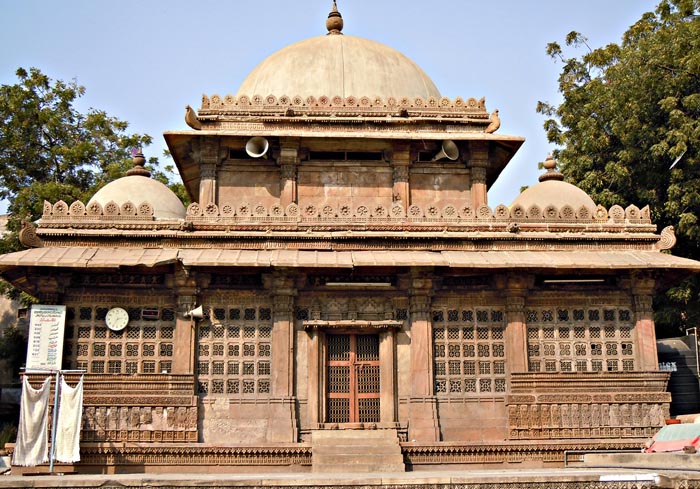Rani Sipri's Mosque

Information on Rani Sipri's Mosque (Ahmedabad, Gujarat) - History & Architecture
Rani Sipri's Mosque is regarded as one of the oldest masjids in Gujarat. Situated in south eastern portion of Ahmedabad city of Gujarat, the masjid was created in 1514 AD by Rani Sipri, the wife of Sultan Mehmud Begada. Rani Sipri's Mosque is also known as Masjid-e-Nagira which signify jewel of masjids, owing to its extremely elegant and well-executed decoration. The masjid not only attracts Muslim devotees, but also various travellers due to its sophisticated construction and impressive turrets. Similar to other historical monuments of 16th century, Rani Sipri's Mosque is covered with impressive curving and differentiated filigree works. The masjid is quite small but still it has sufficient space for the devotees to worship.
Rani Sipri's Mosque Religious Significance
Rani Sipri's Mosque was entitled according to the name of Hindu queen, i.e. Rani Sipri. She commanded the creation of this masjid when her husband executed their son for a certain crime. After the death of the queen, she was buried in Rani Sipri's Mosque. The masjid speaks volumes regarding the inner religious marriage tendencies between different religions. Such marriages had become quite popular among Indian royalty and mostly occurred in order to expedite political alliance. The marriage of Sipri and Mehmud Begada is no different.
Under Mehmud Begada's command, there was considerable small local sultans. These provincial sultans required to depend more actively on Hindu political and military affairs and were also quite generoustowardsacceptingdiverse Indian religious practices or making concessions to inherent traditions. Rani Sipri's Mosque is the great specimen of such traditions where a Hindu princess had accepted the religious traditions of Islam.
Rani Sipri's Mosque Mythology
Legend says that the Muslim nobleness in Gujarat treated Hindu noble families with relative fairness and admiration. On that time, Muslim princesses were frequently engaged in marriage with the royal families of Hindu supporters and in the similar context, Hindu princesses also entered into Muslim royal families through marriages. This was nevertheless, in sharp disparity to the practice of Mughal emperors who although sought Rajput princesses as wives, but did not allowed their princesses to be marry in Rajput households. Mughals usually perceived Rajput princesses as substandard life companions with the exclusion of Mughal king Akbar who was famous for his secularism. However, the regional sultans were most probably treat the Hindu partners as their equals.
Such viewpoint is reflected in Ahmedabad city in a collection of remarkable monuments comprising Rani Sipri's Mosque which in certain respect outperformeven Hindu monuments.Rani Sipri's Mosque is astonishing due to its decorative three dimensional design which has derived from Hindu and Muslim architectural style. It seamlessly includes into their structures and is most enthusiastically enriched with fusion designs from two different religions.
Rani Sipri's Mosque Architectural Significance
Rani Sipri's Mosque is not so large, with a height of about 50 feet and length of around 54 feet. Grill shades with themes of flowing plant are common features of the masjid to be observed. It include a catacomb and row of pillars along with couples of turrets in the front portion which demonstrate traditional Mughal architectural work. Furthermore, there are various trees that can be observed inside the masjid. Rani Sipri's Mosque is adorned with long running passageways and hemispherical ceilings. There is also a distant area of prayer for females in upstairs. The masjid is a reflection of attractive artistry of former period. Henceforth, with fine architecture, high rising miners and a gorgeous tomb of queen Sipri, the masjid is considered as one of the famous religious attractions in Ahmedabad.